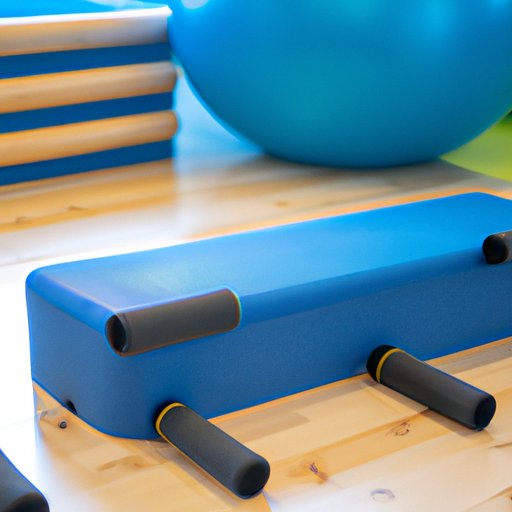
Introduction
Exercise dips are a great way to build upper body strength and improve overall fitness. These versatile exercises work the triceps, shoulders, chest, and core, making them a great addition to any workout routine. In this comprehensive guide, we’ll explore everything you need to know about exercise dips, including their benefits, variations, and technique tips.
Explanation of Exercise Dips: A Comprehensive Guide
Exercise dips are a bodyweight exercise that utilizes the weight of your body to work the upper body muscles. They target the triceps, chest, and shoulders while also engaging the core muscles. To perform a basic dip, begin in an upright position with your hands on parallel bars, a dip station, or an elevated platform. Lower your body until your shoulders are level with your elbows, then push back up to the starting position.
One common mistake people often make with dips is flaring the elbows out to the sides, which can cause unnecessary strain on the shoulders. To avoid this mistake, keep your elbows tucked in close to your sides as you perform the exercise. Additionally, be sure to engage your core muscles to maintain stability and prevent the hips from sagging.
“Dipping” into Fitness: The Benefits of Exercise Dips
Performing dips regularly can yield many physical benefits, including improved upper body strength and posture. As a bodyweight exercise, dips can be performed virtually anywhere, making them an excellent addition to a home workout routine. Furthermore, dips can be modified to suit different fitness levels, making them accessible to beginners and advanced fitness enthusiasts alike. Additionally, dips can be an effective calorie-burning exercise that can contribute to weight loss efforts.
Master The Dip: Tips and Tricks for Perfecting Your Exercise Dips
Improving your dip technique comes down to proper form and gradual progression. When performing dips, be sure to keep your shoulders down and engage your core muscles to maintain stability. You can gradually increase the difficulty of dips by adding weight or decreasing the level of elevation between your hands and feet.
If you experience any discomfort or pain while doing dips, it’s essential to address the issue promptly. For example, if you feel pain in your shoulders, make sure to limit the range of motion and avoid flaring the elbows too widely.

Add Depth to Your Workout Routine with Exercise Dips
Exercise dips can be incorporated into a broader workout routine in several ways. They can be used to complement other bodyweight exercises such as push-ups and pull-ups, or they can be part of a standalone workout on their own.
One way to structure a dip workout is to perform a set of dips, followed by a set of push-ups, followed by another set of dips, and so on. This alternating format allows the upper body muscles to be targeted more effectively and can help you achieve a more challenging workout.
The Different Types of Exercise Dips and How to Choose the Right One for You
There are many different types of exercise dips, each with its unique variation. For example, bench dips are performed using a bench or chair, while parallel bar dips are done using parallel bars. Ring dips and L-sit dips are also commonly performed variations.
When selecting dip variations, it’s essential to consider your fitness level and goals. For beginners, bench dips or parallel bar dips can be an excellent starting point, while more advanced exercisers may find L-sit dips or weighted dips to be more challenging.
Challenging Yourself with Advanced Exercise Dips
If you’re looking for an extra challenge, incorporating more advanced dips into your routine can help you reach your fitness goals. Weighted dips, for example, can be performed by adding a weight plate to a dip belt or holding a dumbbell between the feet. L-sit dips, on the other hand, are a more challenging variation that requires a high level of core strength.
When attempting more advanced dip exercises, it’s essential to ensure proper form and technique to avoid injury. Start slowly and gradually build up to more challenging variations.
The Importance of Proper Form and Technique in Exercise Dips
Proper form and technique are vital for maximizing the benefits of exercise dips and minimizing the risk of injury. Some tips for maintaining proper form include keeping the elbows tucked in, shoulders down, and the core engaged. Additionally, avoiding excessive range of motion can help prevent shoulder strain and injury.
If you’re new to dips, it’s essential to start slowly and work your way up to more challenging variations. Gradual progression is key to building strength, preventing injury, and achieving your fitness goals.
Conclusion
Exercise dips are an excellent way to build upper body strength, improve posture, and burn calories. When integrating dips into your workout routine, it’s essential to start with proper form and gradually increase the challenge level. By keeping these tips in mind and customizing your dips to suit your fitness level and goals, you can experience the full benefits of this versatile exercise.




